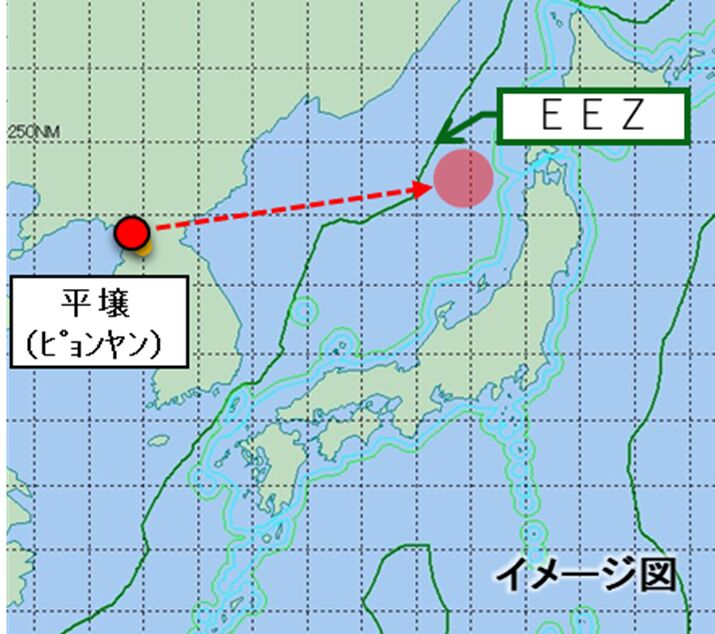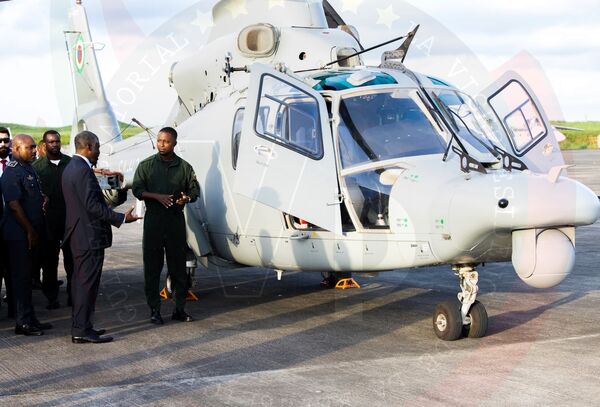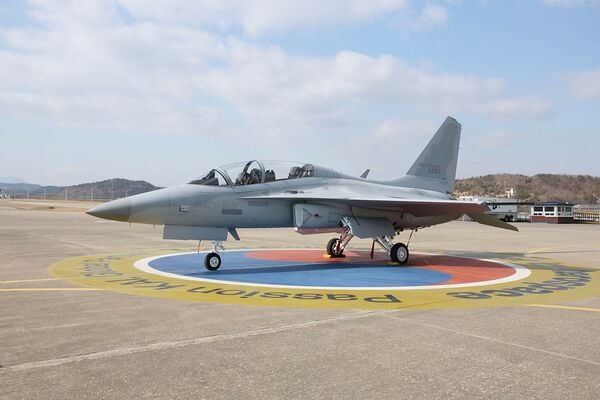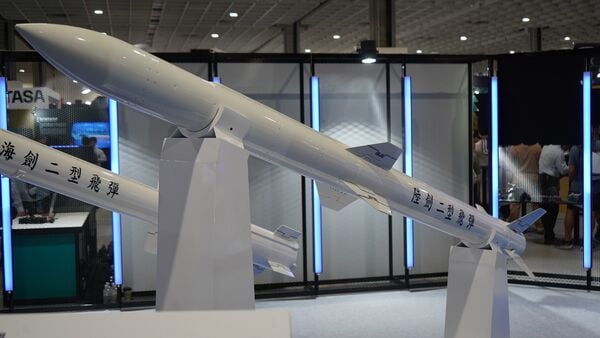- About
- Intara
- Capabilities
- Advisory
- Resources
- News
- Store
North Korea launches Hwaseong-17 ICBM
25 March 2022
by Jon Grevatt & Rahul Udoshi


Japan's MoD said the ICBM launched by North Korea on 24 March landed within its exclusive economic zone. (Japan MoD)
North Korea confirmed on 25 March that it has test-launched its new Hwaseong-17 (also spelt Hwasong-17) intercontinental ballistic missile (ICBM).
It is the country's first launch of an ICBM since November 2017 and signals the end of a self-imposed suspension on the development of such weapons introduced in 2018.
Pyongyang's Korean Central News Agency (KCNA) said the Hwaseong-17 – the largest that North Korea has developed – was trialled by the Korean People's Army (KPA) Strategic Force on 24 March.
KCNA said the missile was launched “from a high angle” from a site near Pyongyang's international airport in the district of Sunan. It said the missile flew 1,090 km at a top altitude of 6,248 km before landing in the East Sea, marking the longest range that a North Korean ICBM has achieved.
KCNA said the launch demonstrated that “all essential elements of the weapon accurately achieved their design requirements”, and that the weapon could be deployed reliably “in wartime conditions”.
Equatorial Guinea flying new Chinese helicopters
17 April 2024
by Jeremy Binnie


One of the new Z-9WE helicopters at Malabo airbase. (Partido Democrático de Guinea Ecuatorial)
The Armed Forces of Equatorial Guinea (FAGE) is now operating two new Harbin Z-9 helicopters, the country's ruling Democratic Party (Partido Democrático de Guinea Ecuatorial: PDGE) revealed on 9 April when it reported that Vice-President Teodoro Nguema Obiang Mangue had inspected the aircraft.
The PDGE released photographs showing the vice-president with at least one of the new helicopters at a location that could be identified as the airbase at Malabo International Airport. It was fitted with a gimballed electro-optical system under its nose and pylons for weapons that can include guns, rockets, and anti-tank missiles.
The Z-9 is the Chinese-made version of the Airbus AS365 Dauphin. The PDGE identified the new helicopters as the Z-9WE variant. It added that Equatorial Guinea is considering acquiring additional combat helicopters.
The FAGE was not previously known to have any Chinese aircraft in its fleet, which consists almost entirely of Soviet-era types.
For more information on the Z-9, seeHAIG (Airbus Helicopters) Z-9 Haitun .
Update: KAI proposes T-50 for RTAF fighter requirement
17 April 2024
by Akhil Kadidal


The KAI T-50 is a tandem-seat multirole trainer aircraft that is in service with Indonesia, South Korea, and Thailand. (KAI)
Korea Aerospace Industries (KAI) has proposed a sale of T-50 multirole trainer aircraft to the Royal Thai Air Force (RTAF), which seeks to acquire new combat aircraft from fiscal year (FY) 2025.
A KAI spokesperson told Janes on 17 April that the proposal for the T-50TH variant was submitted in November 2023. The T-50TH is being pitched for the possible acquisition programme as the RTAF “has already purchased and operates the same model [of aircraft]”, the spokesperson said.
The spokesperson added that the T-50TH is being proposed as it is a multirole aircraft that “is not only suitable for advanced training but also capable of real combat in urgent situations”.
Janes understands that KAI's proposal is in response to an unofficial request for proposals (RFP) issued by the RTAF in the second half of 2023. In its 2024 White Paper, the RTAF detailed a plan to procure 12–14 fighter aircraft to replace ageing Lockheed Martin F-16A/Bs of its 102 Squadron from FY 2025 to FY 2034.
Taiwan test-fires Sky Sword II air-defence system
16 April 2024
by Kapil Kajal


A mock-up of the Sky Sword II – locally known as TC-2 land-based missile – is pictured at TADTE 2023. The missile structure consists of the active radar seeker, followed by the electronics section, proximity fuze, warhead, and rocket motor, ending in the exhaust. (Janes/Kapil Kajal )
The Republic of China Army (RoCA) test-fired a land-based short-to-medium-range air-defence system known as the Sky Sword II for the first time in Pingtung County, the Taiwan Ministry of National Defense (MND) said via its Military News Agency on 16 April.
The test was conducted by the RoCA's 43rd Artillery Command and 21st Artillery Command to verify the effectiveness of the system, the MND said. The Sky Sword II system “successfully hit the target” during the test, the MND added.
Sky Sword II is a medium-range air-to-air missile (AAM) for Taiwan's fighter aircraft. Based on the Sky Sword II AAM design, the island's state-owned National Chung-Shan Institute of Science and Technology (NCSIST) developed a land-based Sky Sword II air-defence system and a naval variant known as Sky Sword II N.
An NCSIST official told Janes
North Korea confirmed on 25 March that it has test-launched its new Hwaseong-17 (also spelt Hwasong-...
Latest Podcasts
Iran Israel analysis
In this podcast Janes analysts discuss the Iranian attacks on Israel on the 14 April. They highlight the military systems used by Iran and the performance and impact of these on Israel. They also discuss the implications of this attack goi...
Listen nowJanes Case Studies
Using Janes Intara to build a common intelligence picture: Russian build up on the Ukrainian border
View Case StudyNews Categories
 Defence Details
Defence Details